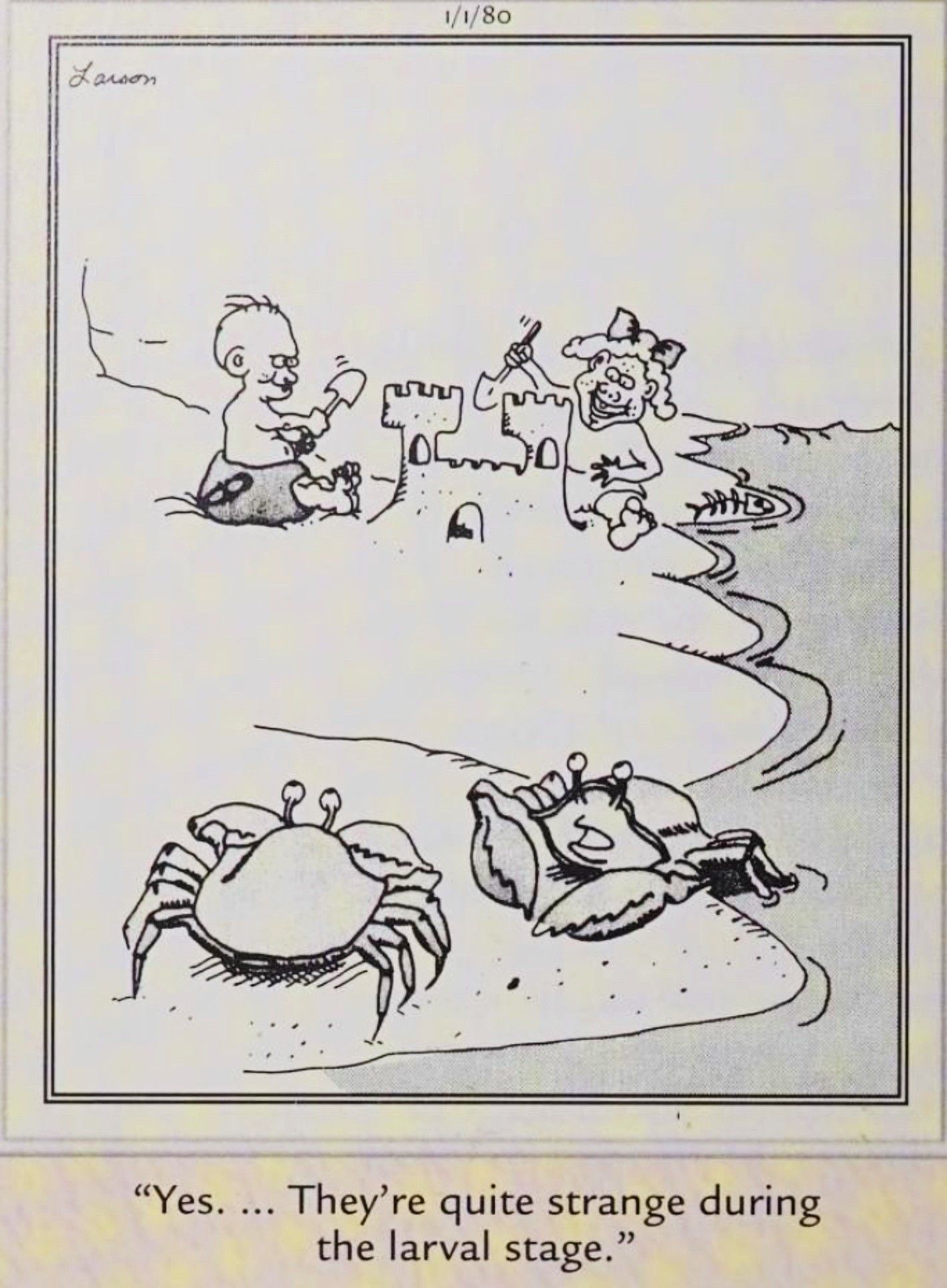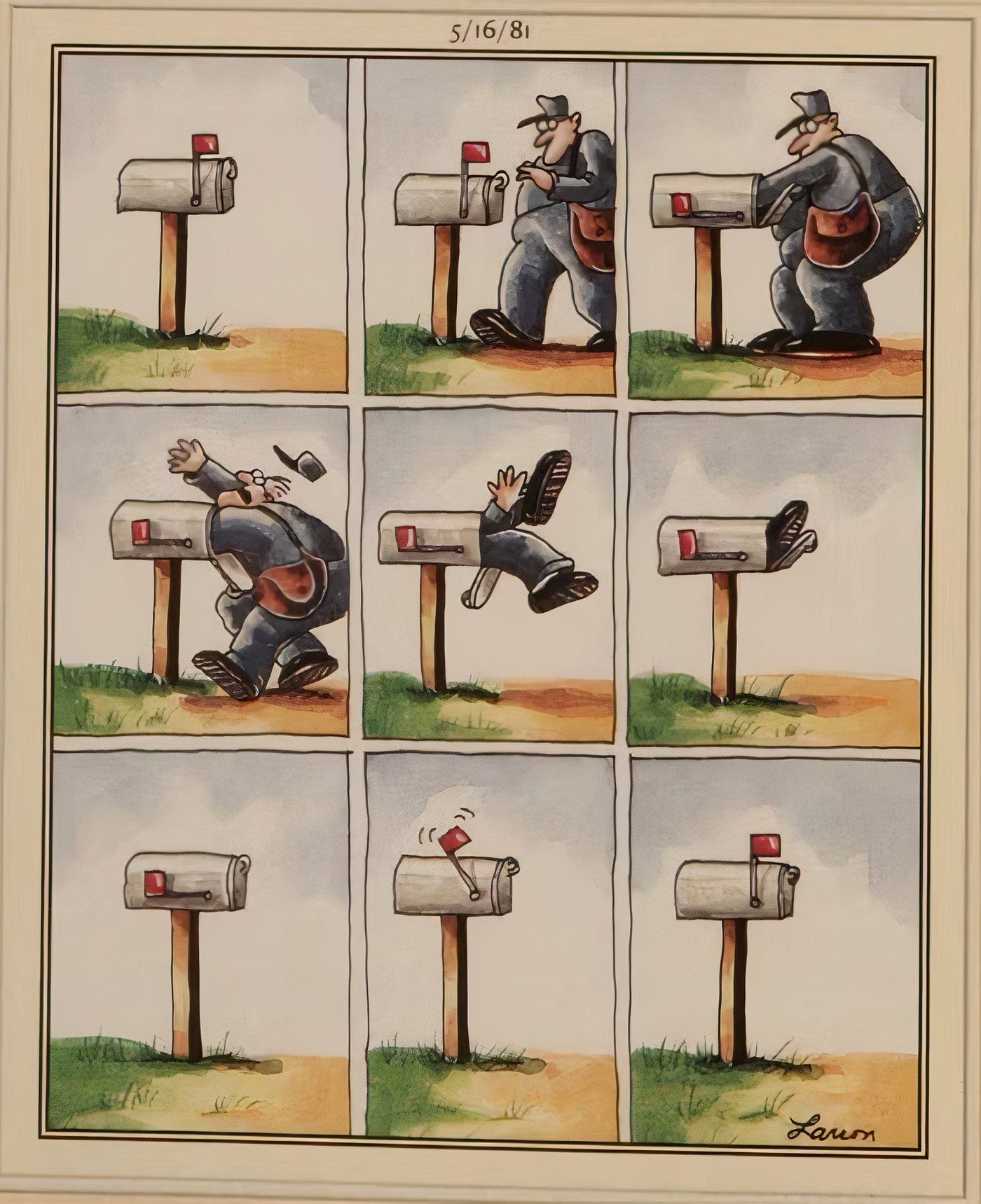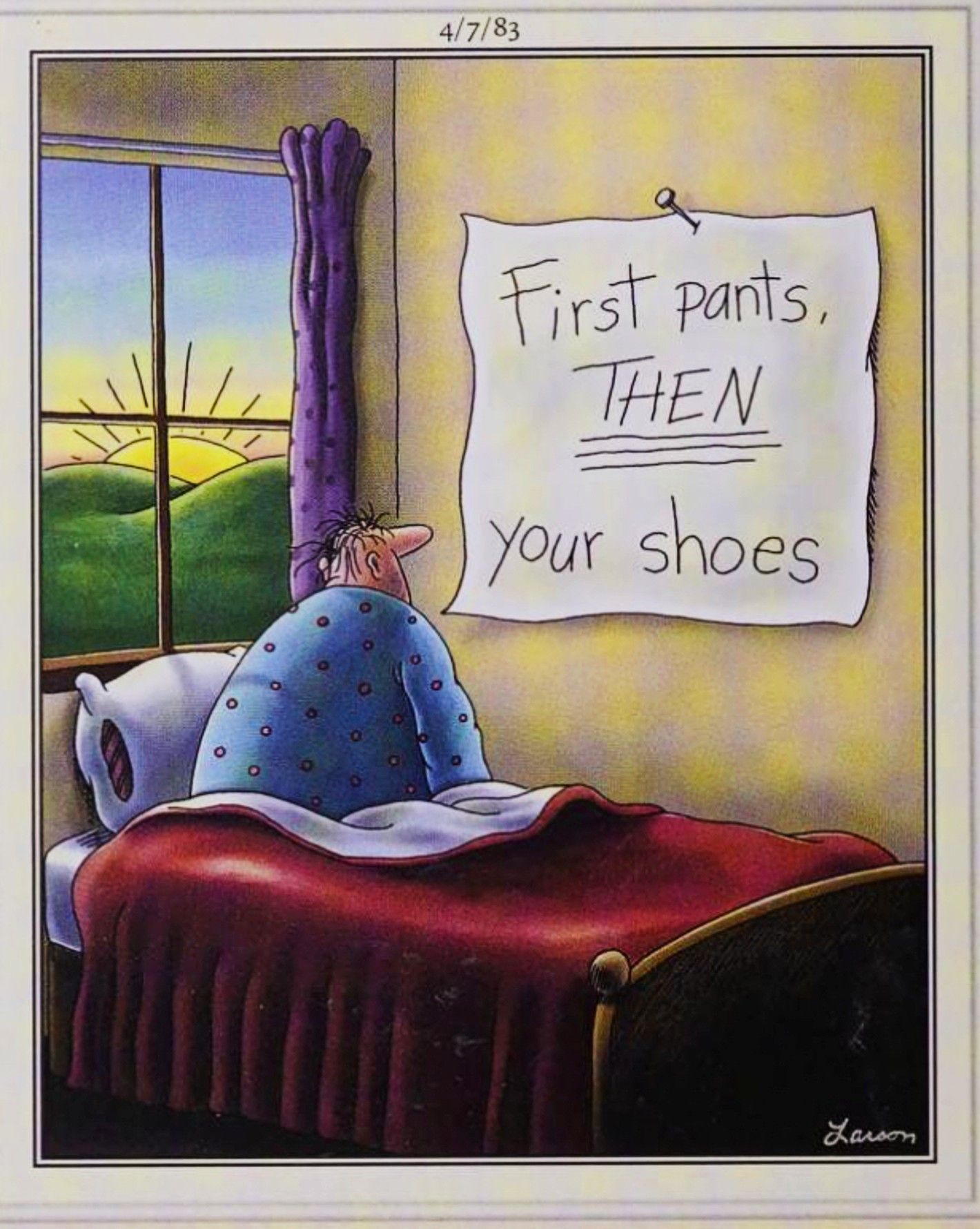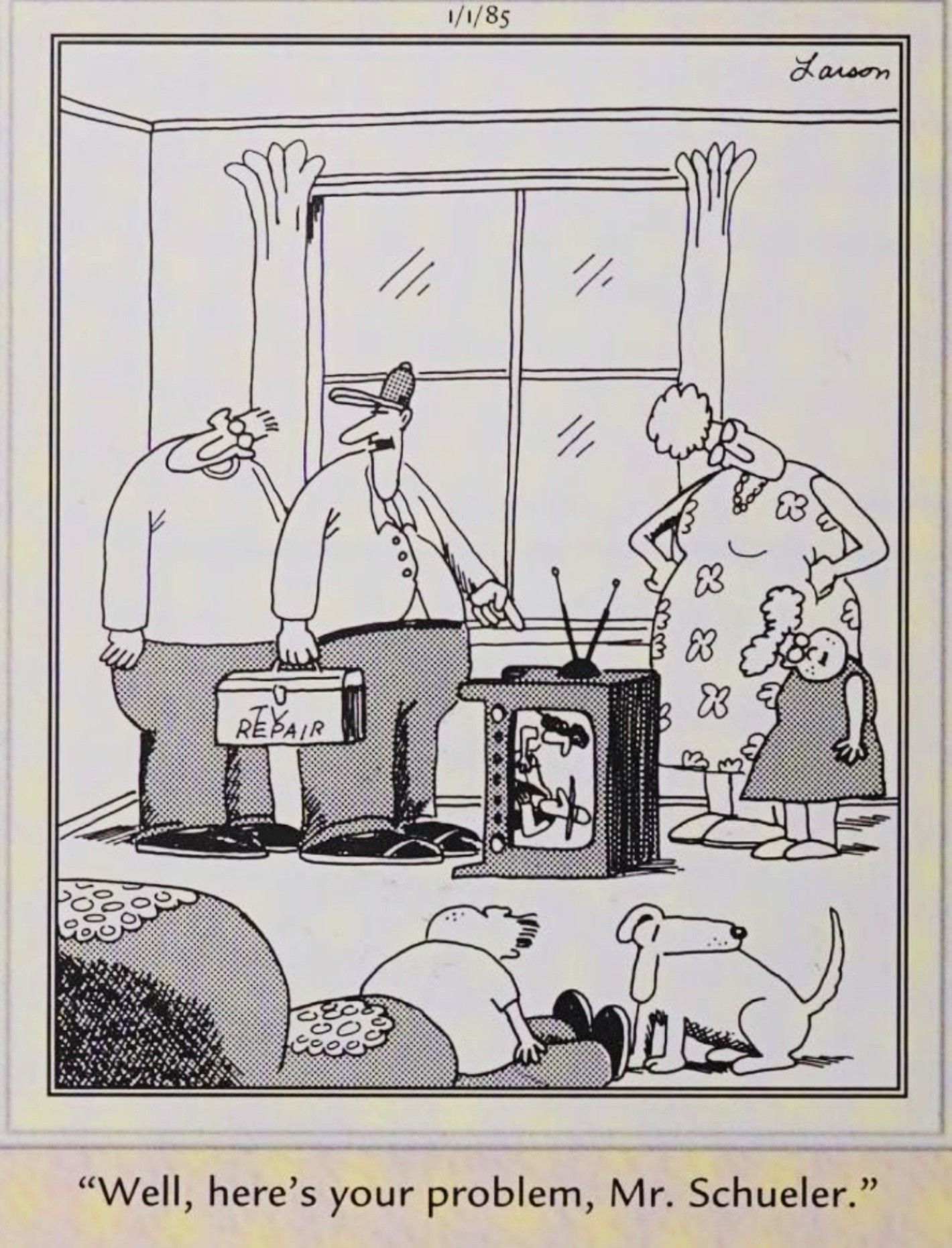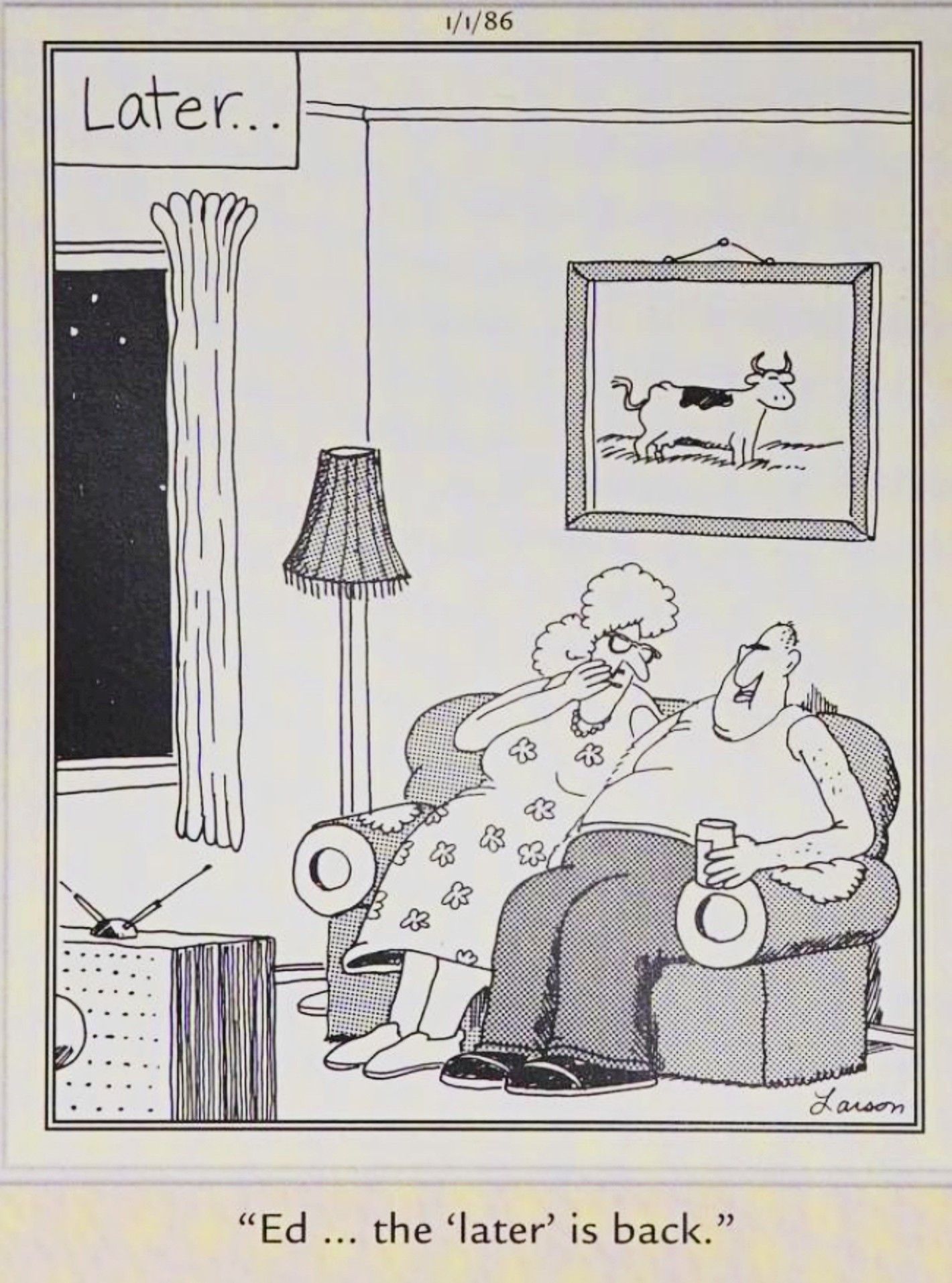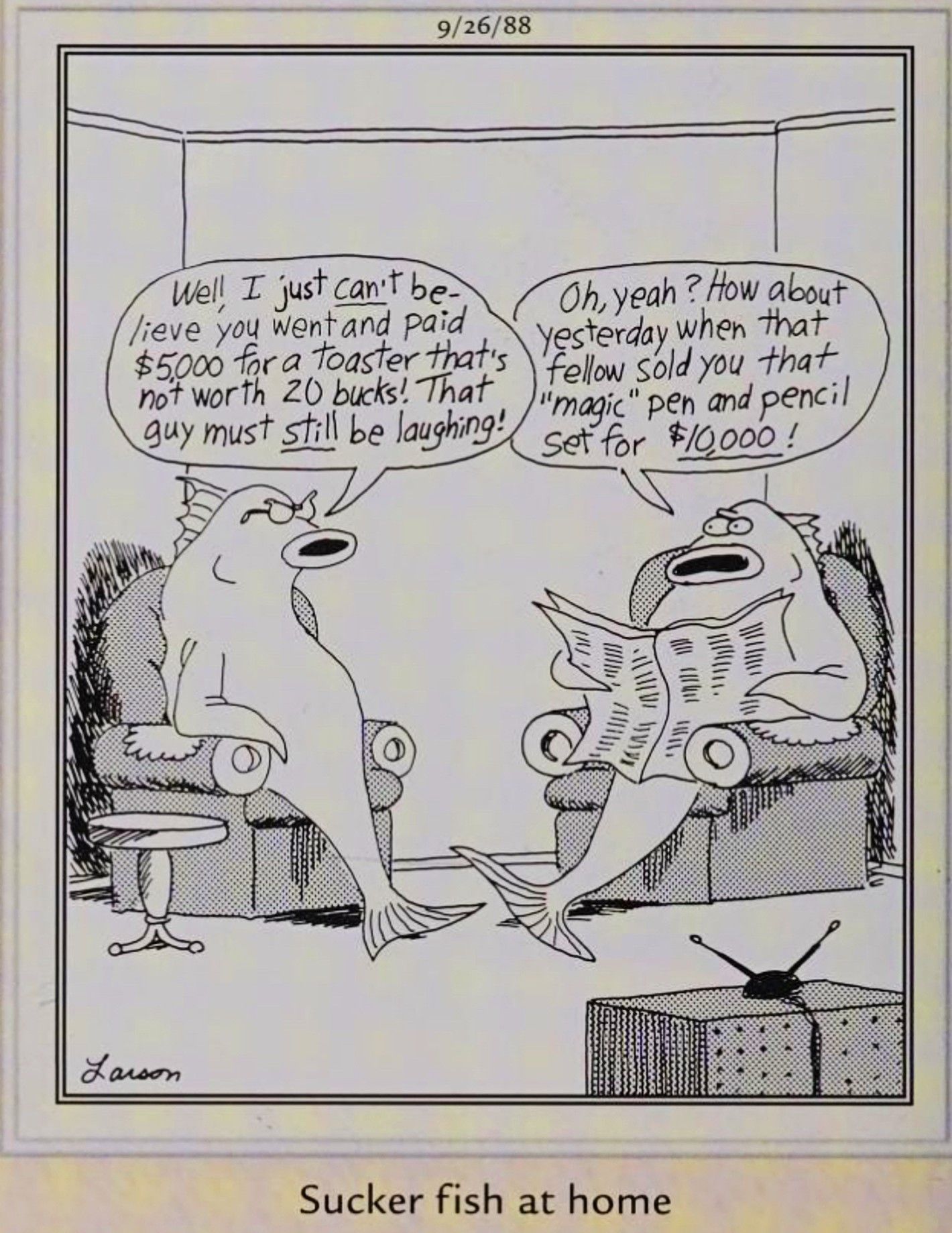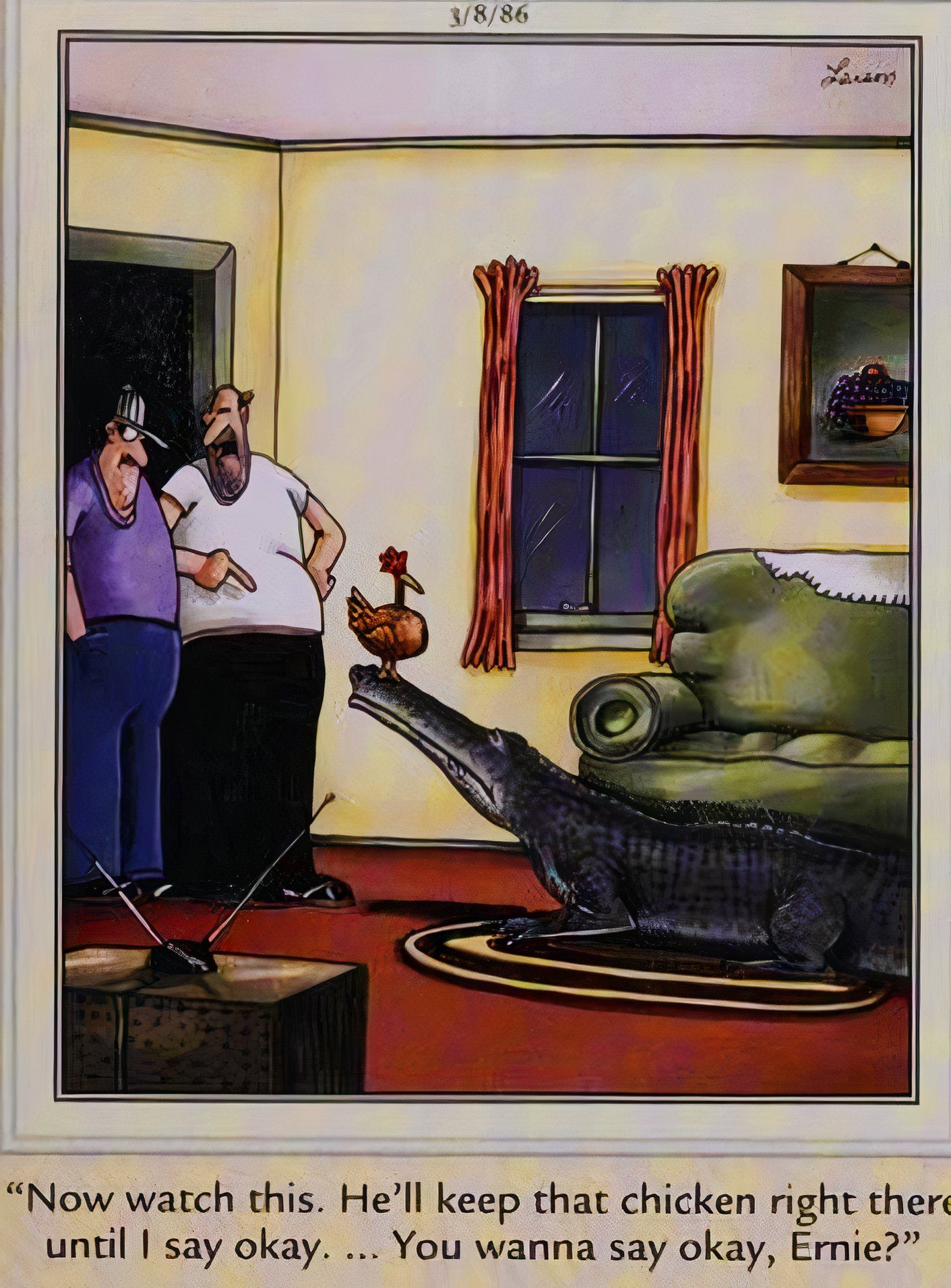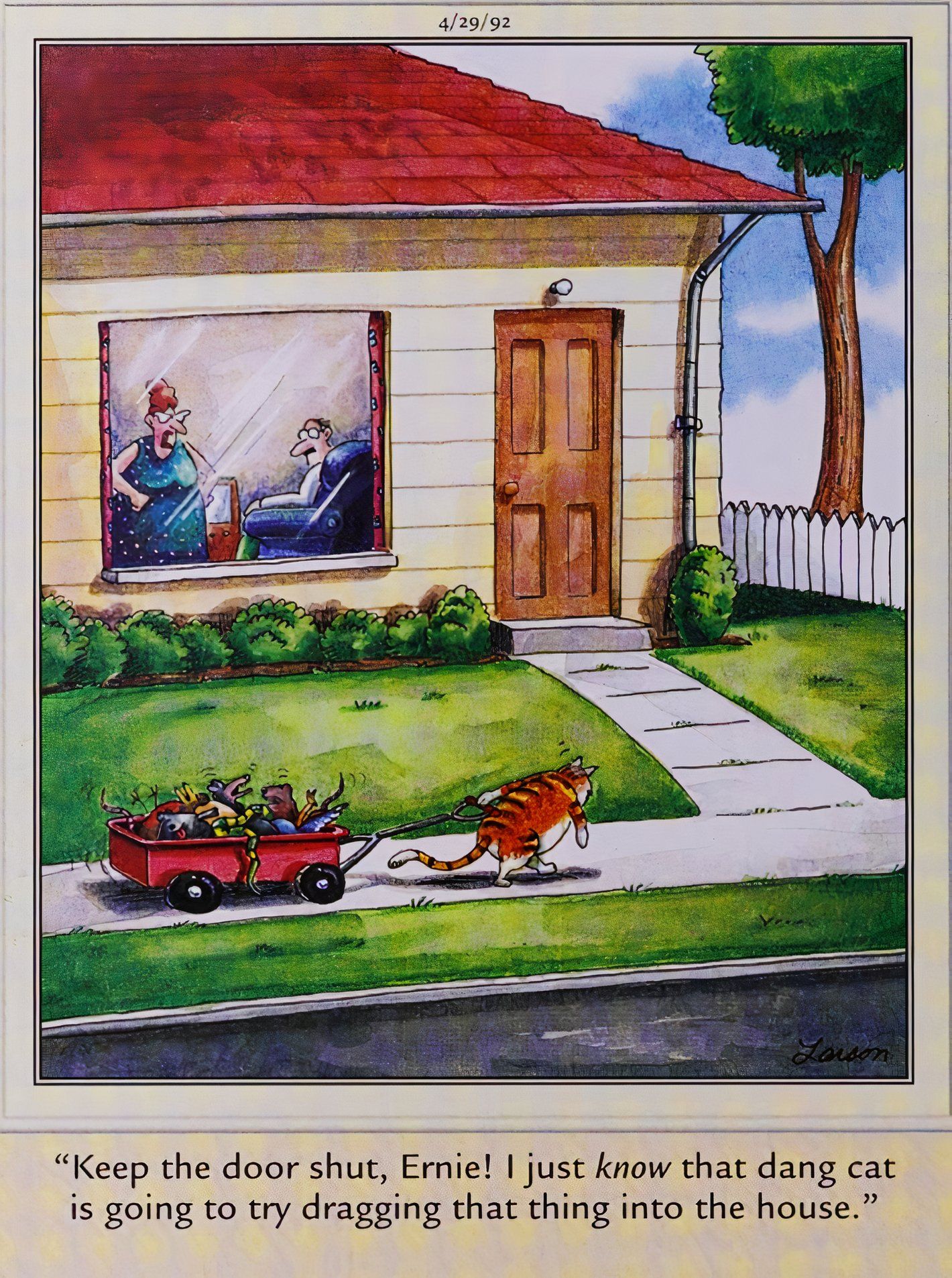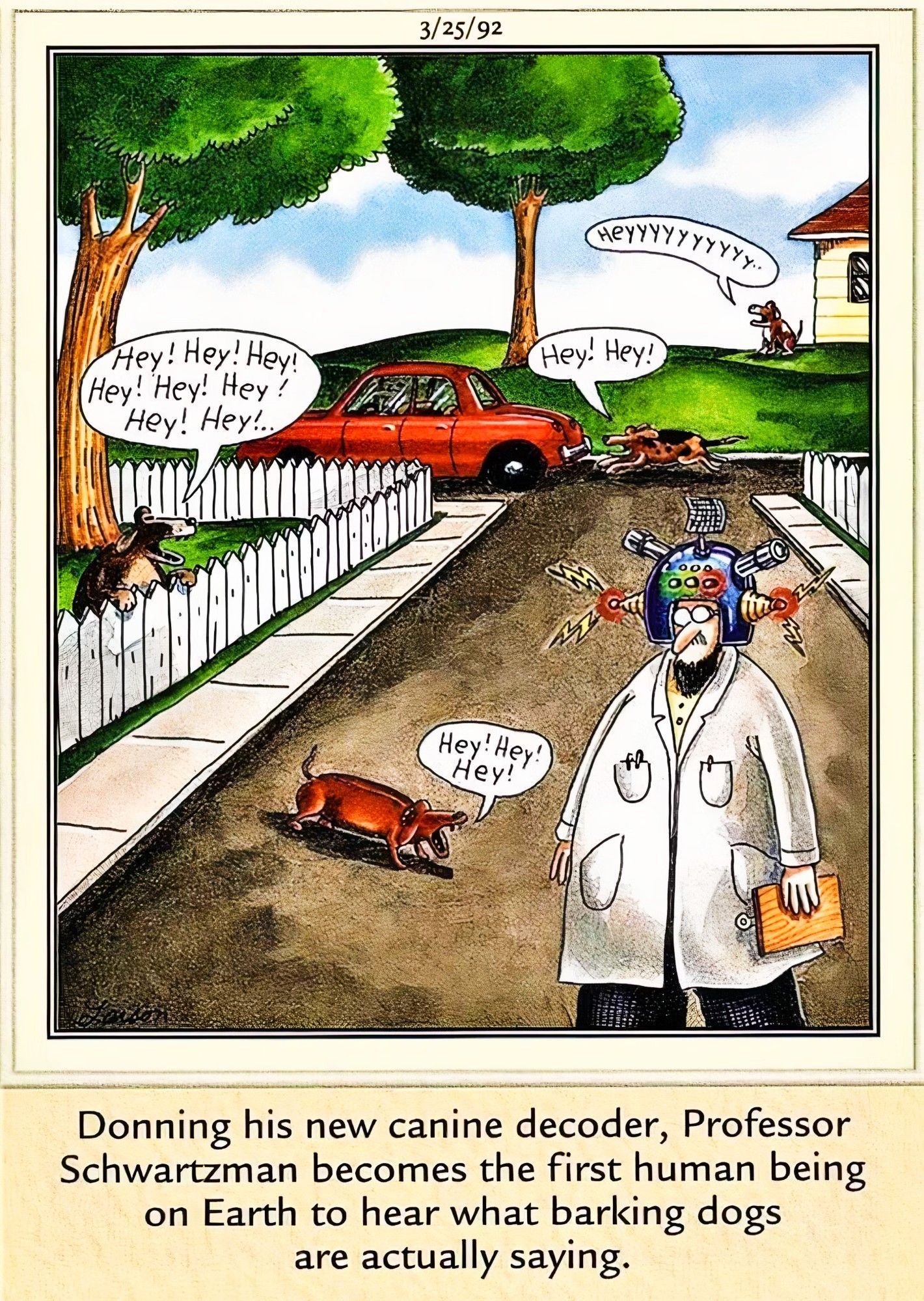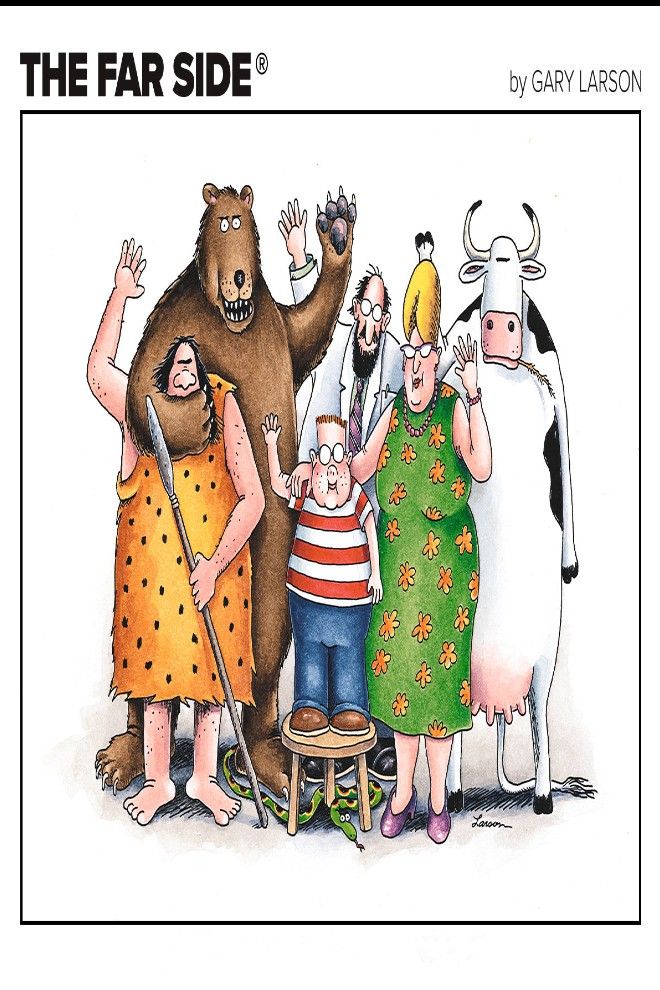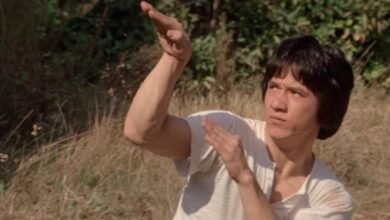10 Hilarious Far Side Comics That Make the Ordinary Outrageous
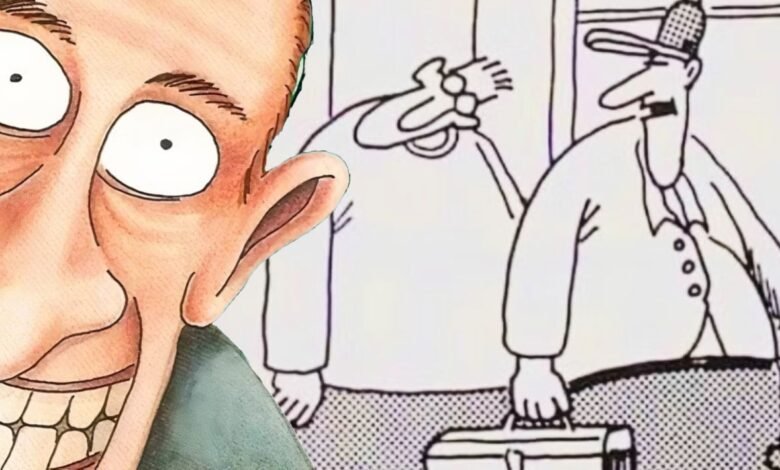
There are many things to like about The Far Side, but perhaps its greatest aspect was Gary Larson’s ability to make the familiar seem strange – to make the ordinary seem not only extraordinary, but actually over-the-top, and at times even outright outrageous. As close as The Far Side had to having a formula, it was this: take something readers will recognize and put an unexpected spin on it.
Gary Larson did this routinely throughout his fifteen-year career, from the very first Far Side cartoons published in 1980 – including one on this list – to the final panels he produced as his career wound down in 1994.
This list celebrates just a sampling of Larson’s virtuoso ability to offer a warped perspective on everyday life, which was an essential part of what made The Far Side a must-read staple of newspaper comic sections across America for over a decade. It also speaks to why he remains one of the most highly-regarded figures in American cartooning to this day.
10
The First Far Side Comic Says It All About Gary Larson’s Point Of View
First Published: January 1, 1980
Of course, the first Far Side comic is subject to as much scrutiny as any individual panel – save for perhaps the infamous “Cow Tools” – is likely to receive, but this is warranted, considering how much this first cartoon tells us about Gary Larson’s sense of humor. It establishes Larson as the perennial outsider, offering an alien perspective on humanity; not unbiased, as the crabs’ observation that human children are “quite strange during the larval stage” makes clear, yet still constantly curious about why humans are such weird, quixotic, contradictory creators.
In other words, loaded into this single panel are essentially all the themes that The Far Side would explore on a daily basis, across thousands of published cartoons. Crucially, it also introduced readers to Larson’s knack for depicting the ordinary, in this case kids building a sandcastle, from an unusual perspective.
9
It Was For The Best That The Far Side’s Most Controversial Romance Ended When It Did
First Published: August 12, 1980
Given his work’s absurdist nature, in which The Far Side’s animals were often anthropomorphized, taking on human characteristics, Gary Larson was able to tackle taboo topics in a unique way, including the occasional interspecies romance. That is, of course, one of many things that some critics have deemed controversial about the comic, but especially in a post-Bojack Horseman world, it is worth giving panels like this one their due.
Nevertheless, this is without question one of Larson’s most uncomfortable Far Side comics, not just because of the romance between a human and a porcupine, but because of the pairing’s invariably painful results. Here, the author takes a normal scenario, the break-up dinner, and makes it slightly scandalous by offering a wild mismatch of elements, while the visual depiction of the human woman’s skin adds a highly visceral element to the reading experience.
8
With The Far Side, Gary Larson Loved To Riff On Expected Occupational Hazards
First Published: May 16, 1981
In this classic early Far Side comic, Gary Larson diverts from his familiar one-panel format, delivering a more traditional comic, with a sequence of panels featuring a mail carrier who approaches a mailbox, sticks his hand in, and is promptly devoured, leading to the true punchline in the final frames, in which the mailbox’s flag goes up, signaling it has outgoing mail.
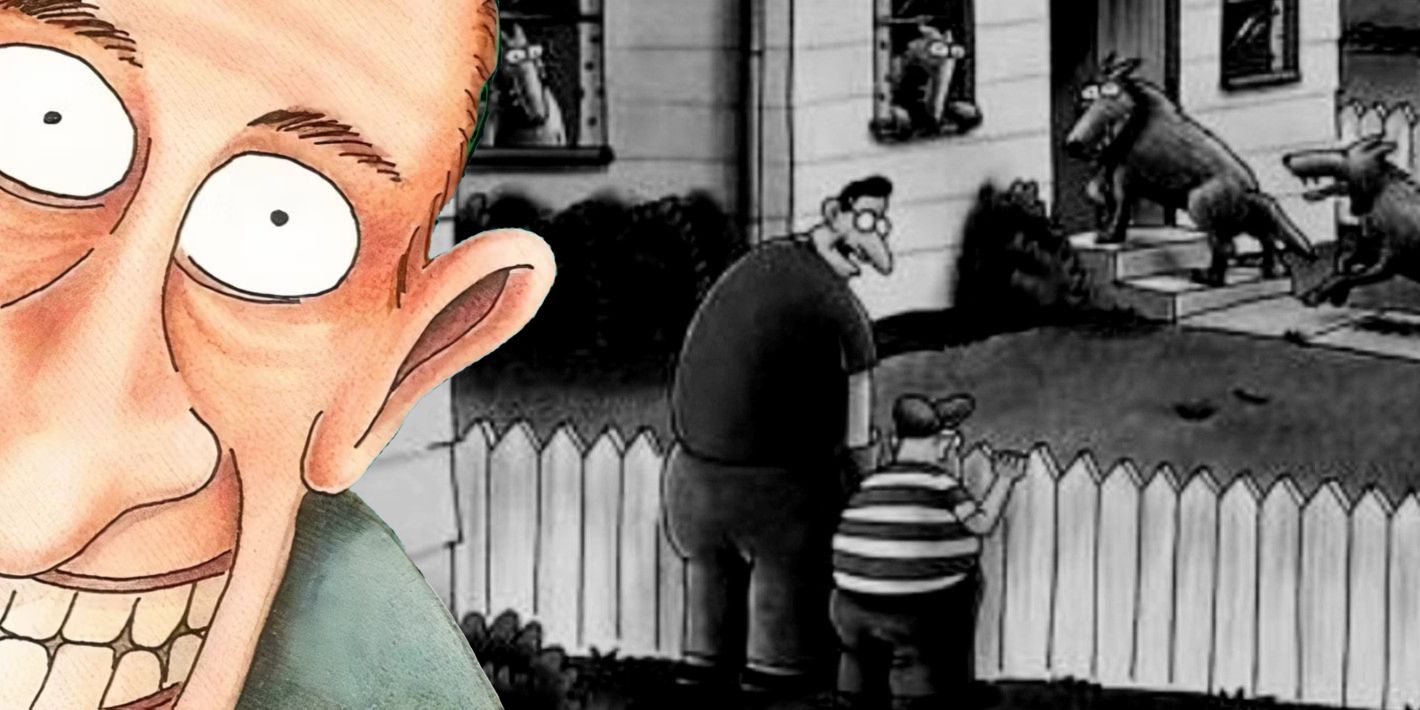
Related
10 Funny Far Side Comics That Prove the Suburbs Are a Terrifying Place
The image of idyllic suburban life was often turned on its head by Gary Larson’s The Far Side, which made the neighborhood a dangerous place.
The joke is evident just from the series of images, making it an example of an effective captionless Far Side comic. It is a simple, straightforward gags, which takes a common, everyday occurrence – mail delivery – and turns it into an unexpectedly violent end for this unfortunate USPS worker. This simplicity, combined with this high-level execution of Larson’s ability to subvert the familiar, is precisely why this remains such a memorable Far Side installment even nearly forty-five years after it was published.
7
This Might Be The Far Side’s Most Oblivious Character – But It’s A Close Call
First Published: April 7, 1983
“First pants, THEN your shoes” reads a note tacked to the wall next to a man’s bed, which he looks at first thing as he gets up at sunrise in the morning – with the humor of the strip deriving from the fact that the note is both outrageously large, and outrageously simple. Its instructions are the very basic foundation of getting dressed in the morning, and the size of the note seems to imply that anything smaller and this apparently-obtuse man would overlook it.
This is an example of a Far Side cartoon that raises more questions than it answers – though occasionally Gary Larson did this inadvertently, just as often it was by design, and that seems to be the case here. Larson seemingly wants the reader to wonder who this man is, and how he could require such simple directions in such large print; these questions, as much as the visual itself, are at the root of what makes this cartoon funny.
6
The Far Side Took Readers Into It Characters’ Homes – And The Results Were Weird, To Say The Least
First Published: January 1, 1985
In this Far Side comic, a routine maintenance call for a TV repairman leads him directly into the weird world of Gary Larson’s imagination – as he enters the home of the “Schulers,” an entire family whose heads are all bent at an improbable angle, giving them a skewed view of the world.
That skewed view is reminiscent of Larson’s own, which was the guiding ethos of The Far Side. Just as often as the cartoon might venture into outer space, or deep under the sea, it took place right into its characters’ living rooms, or at their kitchen tables – or, in other words, in the exact places that people were most likely to read his work when they sat down in the morning, or at night, with that day’s newspaper.
5
The Far Side Proves That Sometimes The Medium Really Is The Message
First Published: January 1, 1986
Gary Larson dabbled in self-referential, metafictional humor over the years, leading to a number of memorable comics, including this one. Here, a couple’s quiet night at home is interrupted by an intrusion into their space – except in this case, the interloper is a caption, in the top left corner of the frame, which readers “Later…”

The Far Side Complete Collection
$71 $125 Save
$54
It is another joke prioritizes simplicity in its form and function, while taking something quotidian and disrupting it somehow. The punchline might not be outrageous, in other words, but the premise is. It is also worth considering this cartoon, in particular, in the context of its publication. By and large, contemporary readers are more savvy to metafiction than the average audience member might have been forty years ago. So, what might seem quaint now may have, at least for some, seemed much more ridiculous in the mid-1980s.
4
The Far Side Reminds Readers There Is A Sucker Born Every Minute
First Published: September 26, 1988
The Far Side was rife with puns; readers familiar with the cartoon will know that wordplay was one of Gary Larson’s strengths – yet broadly speaking, his wordplay-based panels fall into two categories. There are those where the pun is the punchline, and there are those were the pun is the premise on which a further punchline is construction. This is an example of the latter category, as Larson’s depiction of “sucker fish at home” is elevated by laugh-out-loud dialogue he puts in his anthropomorphized fish characters’ mouths.
In the comic, a couple of fish sit in recliners in their living room, bickering about the scams that each of them have recently fallen for; one bought a toaster for five grand, while the other paid twice as much for a “‘magic’ pen and pencil.” Here, Larson captures the absurdity of a domestic argument, as well as the bitterness of those who have been hoodwinked out of money, all in service of a ridiculous linguistic gag.
3
The Far Side Depicts The Struggle Of Being Friends With An Exotic Pet Owner
First Published: March 8, 1986
Plenty of people will have had the experience of going to an acquaintance’s house and being subjected to watching their pet do tricks – except very few people will have had that experience with a crocodile, as is the case in this Far Side cartoon, in which a man’s pet killer reptile balances a chicken on its nose, waiting to be given the go-ahead to devour it.
“You wanna say okay, Ernie?” the owner asks his friend, in a ludicrously funny Far Side moment which extrapolates a more traumatic moment from the mundane experience that serves as the basis for this joke. Without question, this represents one of Gary Larson’s best gator/croc jokes, of which The Far Side contained many.
2
Gary Larson Takes A Figurative Phrase, Makes It Literal, And Then Makes It Absurd
First Published: April 29, 1991
In one of The Far Side’s greatest twists on a classic saying, Gary Larson offers an idiosyncratic interpretation of the phrase “look what the cat dragged in.” Of course, the saying derives from real feline behavior, but over time it has taken on a colloquial, non-literal meaning. Larson takes the step of re-literalizing it, and then goes a step beyond by making it over-the top, as he features a cat dragging a cart full of dead rodents and reptiles toward its owners’ house, as the wife admonishes her husband – another Ernie – to make sure the cat stays outside.
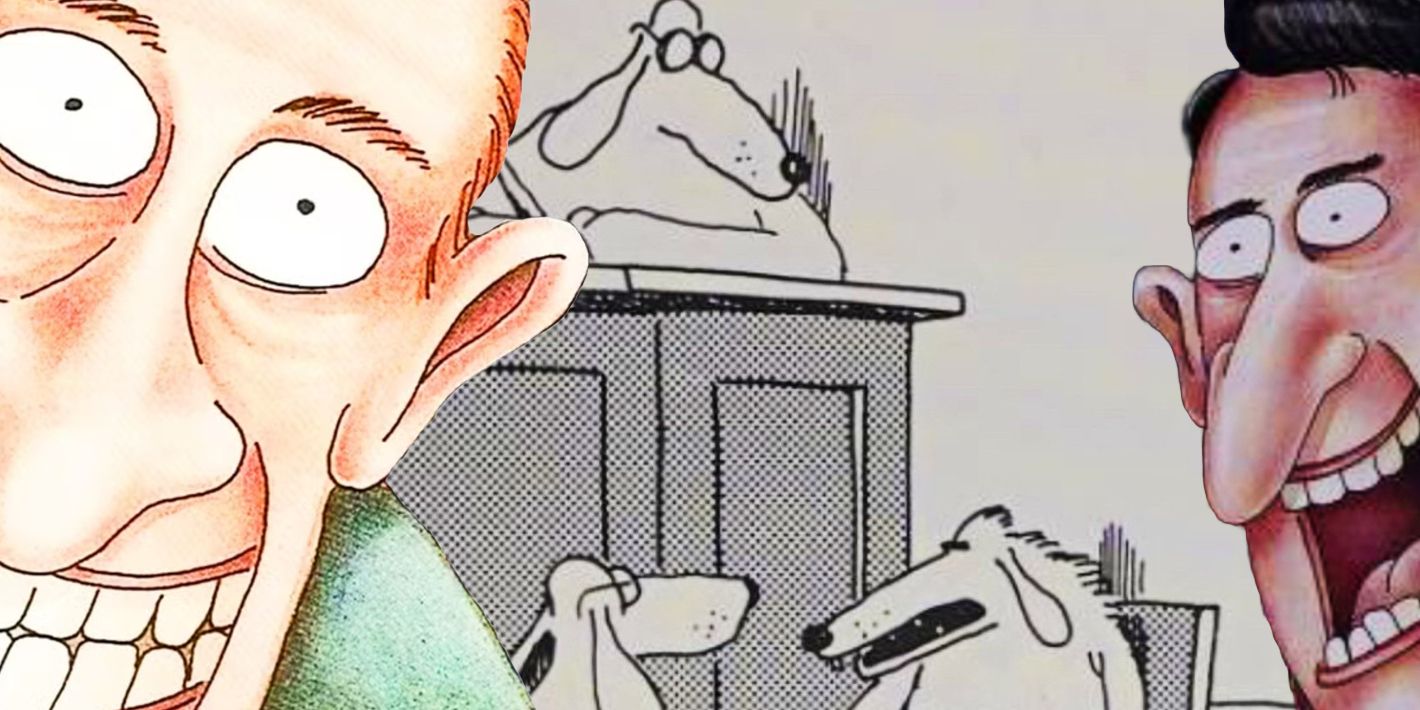
Related
These 10 Hilarious Far Side Comics Are Evidence Of Gary Larson’s Most Underrated Recurring Bit
Many of the Far Side’s courtroom cartoons are among its most memorable, which is why it is almost criminal that they aren’t appreciated more.
This process of interpretation and reinterpretation is representative of how The Far Side approached and appropriated culture; the end result was Larson’s unparalleled ability to surprise, and even shock, his readers, by delivering the familiar in wholly new contexts.
1
This Humor Of This Far Side Comic Translates Across Any Era
First Published: March 25, 1992
This truly timeless Far Side cartoon is considered one of the greatest Gary Larson ever produced. In it, a scientist tests out his new invention, walking down a suburban street wearing an elaborate helmet that translates dog barks into human speech – only to discover that all the neighborhood’s pooches are simply saying “hey.“
The joke is both obvious and ridiculous, and that is the glory of it. It presumably stems from Larson thinking about canine communication, and then coming up with the most banal answer to this surmounting of the cross-species linguistic divide. In essence, this Far Side cartoon tells readers that, as remarkable an achievement as this device might be, there isn’t exactly going to be a lot humanity’s canine companions have to say.

